Western Digital Sentinel DX4000 NAS Review

Today we are going to talk about the new NAS storage system from Western Digital based on Intel 1.8 GHz Atom dual-core processor and featuring two hard drives inside. It is also is powered by Windows Storage Server 2008 R2 Essentials and is targeted for SMBs with 25 client devices or less.
Western Digital is first and foremost one of the few HDD makers left after the numerous mergers. However, the company also offers other types of products, including media players and network attached storage devices, which are related to its main business. It takes a large HDD to store multimedia files whereas NASes cannot do without HDDs at all.
Products a company doesn’t specialize in often come out mediocre in terms of features and capabilities. But even lacking in user-oriented features, they can at least be expected to sell at an attractive price.
The Sentinel DX4000 is currently the only NAS in the company’s Small Business Storage category. It is promoted as an easy-to-set-up and easy-to-manage NAS with data protection features, secure remote access, high performance and compatibility with different OSes.
The Sentinel DX4000 is shipped with different HDD configurations ranging in capacity from 4 to 16 gigabytes. We’ve got the junior version for our tests. It is based on the x86 platform with an Intel Atom processor and Microsoft Windows Storage Server Essentials 2008 R2. It is shipped with a 3-year warranty. Additionally the manufacturer provides paid tech support and WD Guardian services whereas the warranty can be extended to 5 years.
The mentioned OS is the junior version in the NAS-oriented OS series from Microsoft. It is meant for SOHO businesses with up to 25 client devices.
Package and Accessories
The Sentinel DX4000 is shipped in a very large box that measures 34 x 29 x 40 cm but its interior is largely filled up with air and pieces of foam rubber. The manufacturer has taken care that the device reaches its buyer without any problems.
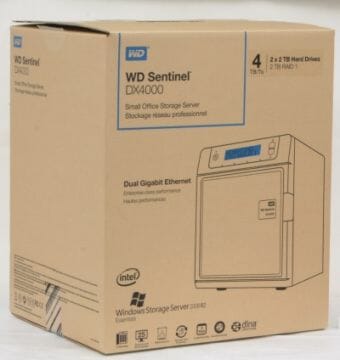
The accessories include an external 120W power adapter with several cords for different regions, an Ethernet cable, a thick user manual, and a leaflet with tech support and warranty information.
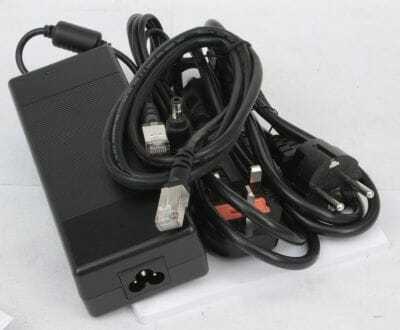
Frankly speaking, an external power adapter isn’t a good solution for a 4-disk corporate NAS, but it is easier to replace in case of failure and better in terms of temperature inside the case. The power adapter is manufactured by FSP and its mains connector is of the notebook rather than the desktop form-factor. Such cables are not so widespread, so you should try not to lose the included one. The NAS’s fan turns on as soon as you connect the power adapter irrespective of the status of the NAS itself. The accessories do not include any discs with software. All of it must be already written on the hard disks.
Exterior Design
The Sentinel DX4000 looks good. Its black case is designed in such a way that it doesn’t seem bulky although the size is comparable to other 4-disk SOHO-class NASes: 16 x 22.5 x 20.5 centimeters. At the top of the front panel we can see a Power button, system status and HDD activity indicators, and a 2-line dot-matrix display with two buttons.
You can use the buttons to choose what information to see on the display (the NAS’s network name and address, the number of HDDs, or the available capacity).
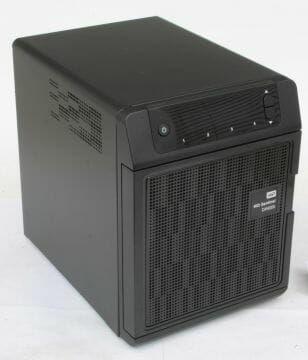
The door of the HDD bays has a metallic grid in its center for the outside air to get into the case. The vent grid looks good with its glossy coating. There are small vents in the sides of the metallic case, too.
The back panel offers a pair of power connectors, Ethernet ports and USB 3.0 ports, a hidden Reset button, the grid of a 90mm exhaust fan, and a Kensington slot. The connectors are all at the top of the panel, so they are easy to access, but the cables aren’t going to look neat. The two power connectors are supposed to make the NAS more reliable.
The case stands on small rubber feet.
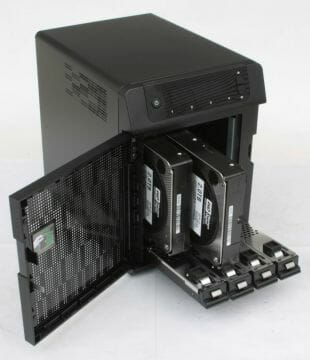
The Sentinel DX4000 doesn’t provide any normal means to dismantle the case. The HDD bays support hot swapping. You don’t need any tools to install HDDs into this NAS.
The robust metallic chassis of the NAS is riveted in most spots, so it is going to be difficult to replace or clean the cooling fan. There is a rather small PCB in the top of the case. It carries an Intel Atom D525 processor and an ICH9 chipset covered with needle-shaped heatsinks. The hardware platform is over 2 years old, by the way. The system memory consists of a single 2GB DDR3 module from Samsung in a SO-DIMM slot.
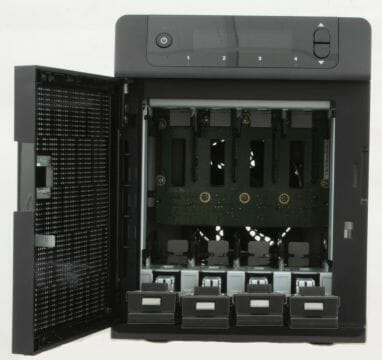
A backplane is used to connect HDDs, which is a more reliable solution than cables. The disk controllers are integrated into the chipset. USB 2.0 is ignored in this NAS, but it has an additional NEC controller that supports two USB 3.0 ports. The Ethernet controllers are based on Intel’s 82574L chips. There is a single 3-pin fan connector on the PCB for the system fan.
There are several unlabeled bonding pads here but we don’t know if there is a video output among them.
While the latest top-end NASes from other brands offer VGA and HDMI, the Sentinel DX4000 is different in this respect. The lack of a video output may be due to Intel’s or Microsoft’s requirements concerning the use of their chips or software.
The hardware configuration is comparable to modern x86 NASes except for the lack of eSATA (the chipset might provide a couple of more ports) and video output. The latter makes it virtually impossible to run some other OS on the Sentinel DX4000.
Functionality
The Sentinel DX4000 is inferior to Linux-based NASes in terms of HDD configurations. It only supports one RAID and the latter must be fault-tolerant. So, the basic configuration is a RAID1 built out of two HDDs. Our Sentinel DX4000 had two WD2002FYPS drives from WD’s RE4-GP series.
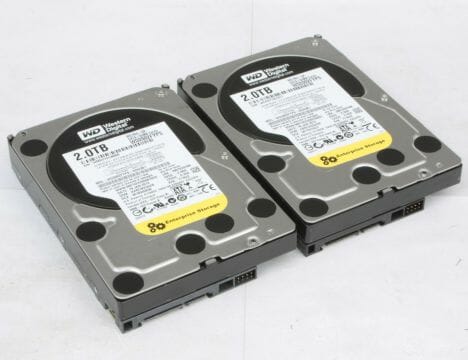
The OS takes 60 GB for its own purposes. With updates installed, we had about 40 gigabytes free from that amount.
Installing additional HDDs triggers automatic migration without data loss to a RAID5 built out of three or four HDDs. The Sentinel DX4000 is only compatible with a few models of enterprise-class HDDs, which is not convenient. The migration takes quite a long time: transitioning from two to three HDDs lasted about one day. A move from three to four HDDs took 30 hours. The NAS was accessible during that process but its performance was much lower than normal.
Oddly enough, the log entries about the start of the migration would be lost after its completion. The NAS’s log file has some other oddities, though. Updating information on the admin panel takes a few minutes, for example.
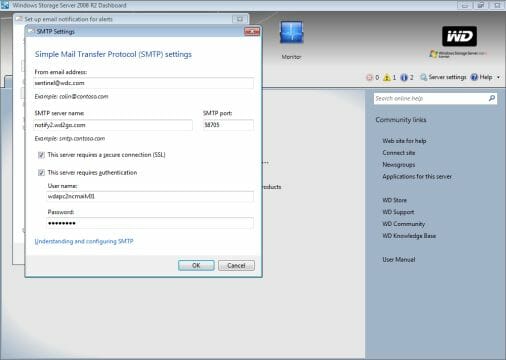
You can only get notified about urgencies via email. WD provides its own SMTP server to send such notifications but you can replace it with something else. If you’re using your mobile phone to receive them, you should be aware that the notifications are in HTML format with images.
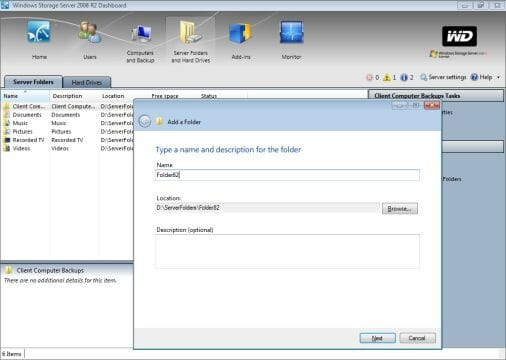
It is possible to create shared resources which are represented as ordinary folders on the RAID array. Access rights can be assigned to individual users (including Guest) or for all users to read or write. There are no other options, which is normal considering the single available access protocol. NFS support is also declared in the NAS’s specs but the user manual and admin console do not have any mention of NFS. This service is not installed in the default configuration.
If you’ve got an external disk connected to the NAS, you can use it to create shared resources and assign access rights to them. The device’s root directory cannot be accessed.
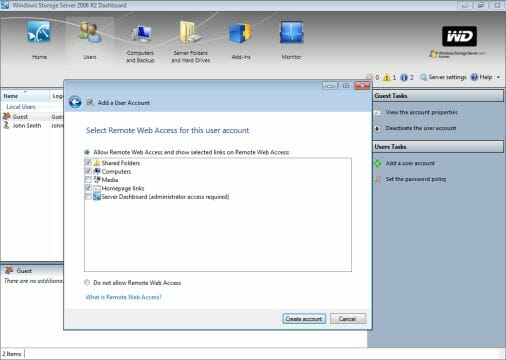
As for user accounts, you can use a local database or domain data. You can set up remote access options for each account individually. Admin rights can also be assigned.
One of the key features of the Sentinel DX4000 is its ability to automatically back up data from client computers which run the above-mentioned software. With appropriate hardware support on the client side, the NAS can even turn on the client PC remotely to perform a backup job.
When the client software is installed, the PC is registered in the NAS’s database. You can then set up backup options on the PC or in the server’s control panel. The backup jobs are carried out sequentially. After that, the server installs updates and reboots (that’s what its documentation says). You can specify the operation schedule and backup mechanism in the service settings. By default, the backup procedure runs from 0:00 to 6:00. The NAS stores five daily, four weekly and six monthly copies of data. You can enter any number up to 99 into each field and specify the hour for the procedure to start.
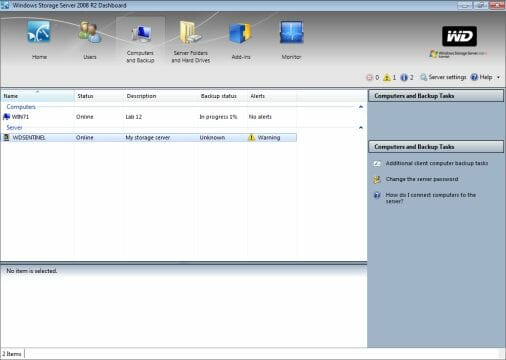
Take note that the NAS makes a full copy of a disk. You cannot choose particular data to back up. The service description says that deduplication technology is used to reduce the required storage amount.
Shadow copying technology provides additional options. Its settings are available from the standard admin console (by default, copies are created on a daily basis). This service is enabled for the system volume and user data. It helps users restore a required version of a file that has been changed.
The NAS has integrated means to set up, change or remove a password to access the HDDs as provided in the ATA standard. The key seems to be stored in the PCB’s memory. If password-protected, the HDDs can only be accessed from this server unless you know the password. This feature doesn’t affect the HDDs’ performance.
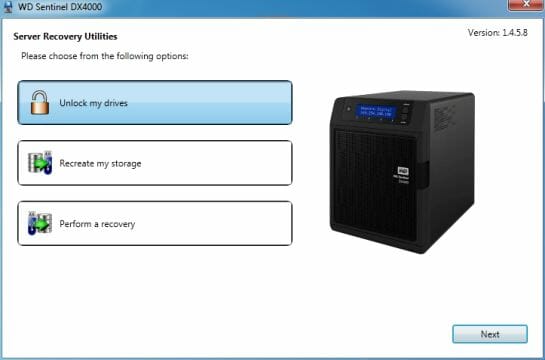
The backup service allows you to create a bootable USB drive that can be later used to quickly restore client PCs by deploying a system disk image. The same method is used for the NAS itself. It can be helpful when installing an OS on to clean HDDs or when some failure prevents the OS from booting up.
We checked this feature out and found that it took over 8 hours to start up the NAS with two new HDDs. But we had to use two boot drive versions and press the reset button a few times, etc. So, the implementation is not handy. The manufacturer might have instead added an integrated flash drive with necessary data and/or use the NAS’s own display and buttons.
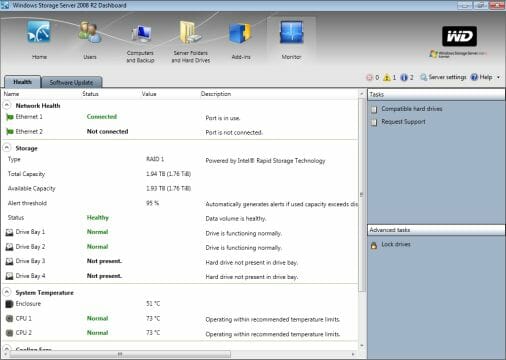
In the Monitor section you can check out the current status of the NAS and its components. Information about model name, SMART parameters and temperature is not available for the HDDs. There is no option to turn off external HDDs safely.
Apple computers are supported as well. There is a special version of the client software for them but it refused to install on a Mac with the latest and up-to-date OS (saying that it’s already installed). In Mac OS X 10.6.5 the utility didn’t let us do anything, so we couldn’t check out if its functionality differed from that of the Windows version. SMB-based access worked, though. Time Machine didn’t accept the NAS as a valid storage destination and some documentation only listed versions 10.5 and 10.6 as compatible ones.
The description you’ve just read refers to the basic version of the Sentinel DX4000. Its capabilities can be extended by installing certified modules from a catalogue available on the Microsoft website. Of course, you can try installing any other software, but you may have problems with compatibility or stability. At the time of our writing this the catalogue for this NAS offered about two dozen applications. Some of them enhance your NAS management options (for example, power management or remote management via a mobile phone). Others add new client-oriented services (iSCSI, ISO mounting, network printing, fax support). There are also complete server solutions for specific usage scenarios (sales system administration).
Performance
Our preliminary performance tests proved that we could use the standard Intel NASPT templates for benchmarking. We used WD2002FYPS HDDs. You can see the results in the diagram.
The peak read and write speed are 100 and 80 MB/s. The external disk is comparable in performance to the dual-disk RAID1. Compared to other NASes with similar hardware, the Sentinel DX400 is somewhat slower than average.
It must be noted that these are synthetic benchmarks that refer to specific file reading and writing scenarios. Backup copying may work differently, for example. When creating a copy of a client’s system disk, the integrated backup service worked with a speed of about 13 MB/s (20 minutes to create a copy of 15 GB of data).
Conclusion
With its cute and functional design, fast (although dated) hardware platform, small dimensions, USB 3.0, two Ethernet ports, and tool-less hot-swap HDD bays, the Sentinel DX4000 is a step forward for Western Digital on the NAS market.
As opposed to the hardware, Windows Storage Server 2008 R2 Essentials has left us rather perplexed. The fact that it’s Windows is good in itself as this may be necessary for some usage scenarios. It’s got a handy backup system for Windows clients and an interesting remote access feature. However, this version of Windows is rather difficult for non-specialists to manage. The default firmware doesn’t provide many popular capabilities such as FTP server, UPS support, multiple disk volumes, iSCSI, extended backup copy options, notifications, and mobile apps. Of course, many of these features can be implemented in Windows, but you need desktop access and full-featured OS administration. It’s unclear how the standard WSS environment will react to new applications, though.
So, if Windows is not a requirement, Linux-based NASes seem more appropriate for home and SOHO users right now. They offer broader functionality out of box. They are easier to set up and manage.
As for the price factor, the Sentinel DX4000 is shipped with enterprise-class HDDs which are quite expensive. That’s why it is not affordable, even though not very expensive, either.